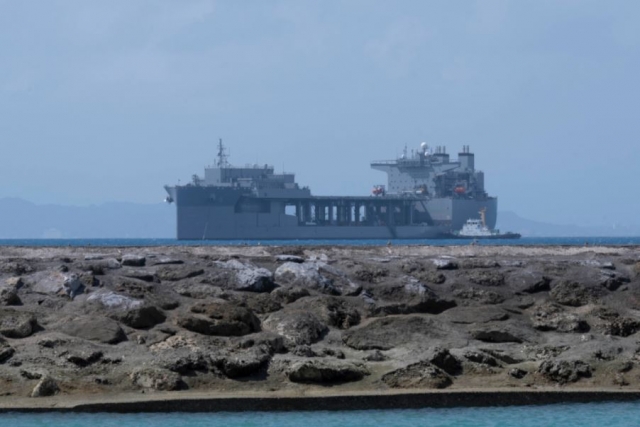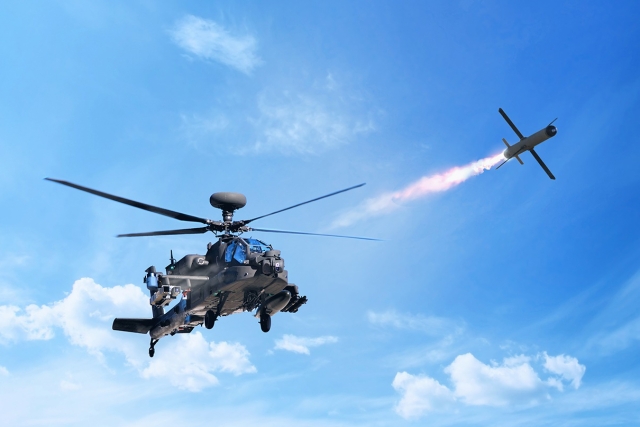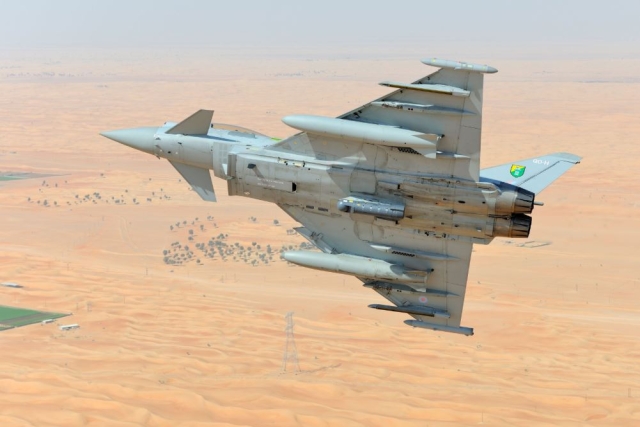U.S. Navy Ship Overcomes Invasive Volcanic Stone from Underwater Eruption

The U.S. Navy’s USS Miguel Keith’s (ESB 5) crew of Sailors and Civilian Mariners overcame the impact of a rare geologic event – the drifting remnants of an underwater volcanic eruption – to successfully participate in Exercise Coral Dagger in November near Okinawa.
Miguel Keith is a Lewis B. Puller-class expeditionary mobile base, one of three such ships in service with the Navy.
Fukutoku-Okanoba, a submerged volcano about 800 miles southeast of Japan, erupted Aug. 13, spewing pumice stones that drifted as far as Okinawa, where the ship was operating in late October.
“According to reports, this was the biggest underwater eruption Japan has seen since World War II,” said Capt. Troy Fendrick, Miguel Keith’s commanding officer. “Almost three months later we still experienced the impact, as the ship developed issues in the engineering plant’s cooling system. It took a whole-team effort of several days to avoid a total loss of power and propulsion at sea, and I could not be more proud of the crew’s efforts to keep the ship in the fight.”
Fendrick said pumice had clogged strainers on the ship’s sea chests, which suck in seawater for firefighting, equipment cooling, and other services. He added that some particles were small enough to pass through the strainers into critical propulsion systems.
“Over time, pumice ingestion plagued virtually the entire engineering plant,” Fendrick said. “Clogs caused high temperatures in both port and starboard coolers, which provide vital cooling water to all propulsion and electrical generating equipment. All of our stern tube seal pumps were also clogged, as well as our evaporators, which we use to make fresh drinking water for the crew.”
Fendrick said the engines on each shaft were shut down for almost four days at a time while the crew disassembled and thoroughly cleaned vital equipment.
“Our hybrid crew worked exhaustively for countless hours, doing what is typically a depot-level job,” said Fendrick. “It’s something we would normally do in port, with help from an outside repair activity. The fact that our crew was able to accomplish this at sea in such a short time, keep us on station ready to ‘fight tonight,’ and avoid costly damage and repairs, speaks to our warrior toughness, and our ability to adapt and sustain ourselves in the face of adversity.”
Miguel Keith supported Naval Special Warfare during Coral Dagger, Nov. 4-9, before transiting to a scheduled port call in South Korea. Operating as part of Amphibious Squadron (PHIBRON) 11, Miguel Keith brings a broad range of military capabilities to enhance theater littoral warfare operations.
The ships of PHIBRON 11, along with the 31st Marine Expeditionary Unit, are operating in the U.S. 7th Fleet area of responsibility to enhance interoperability with allies and partners, and serve as a ready response force to defend peace and stability in the Indo-Pacific region.










